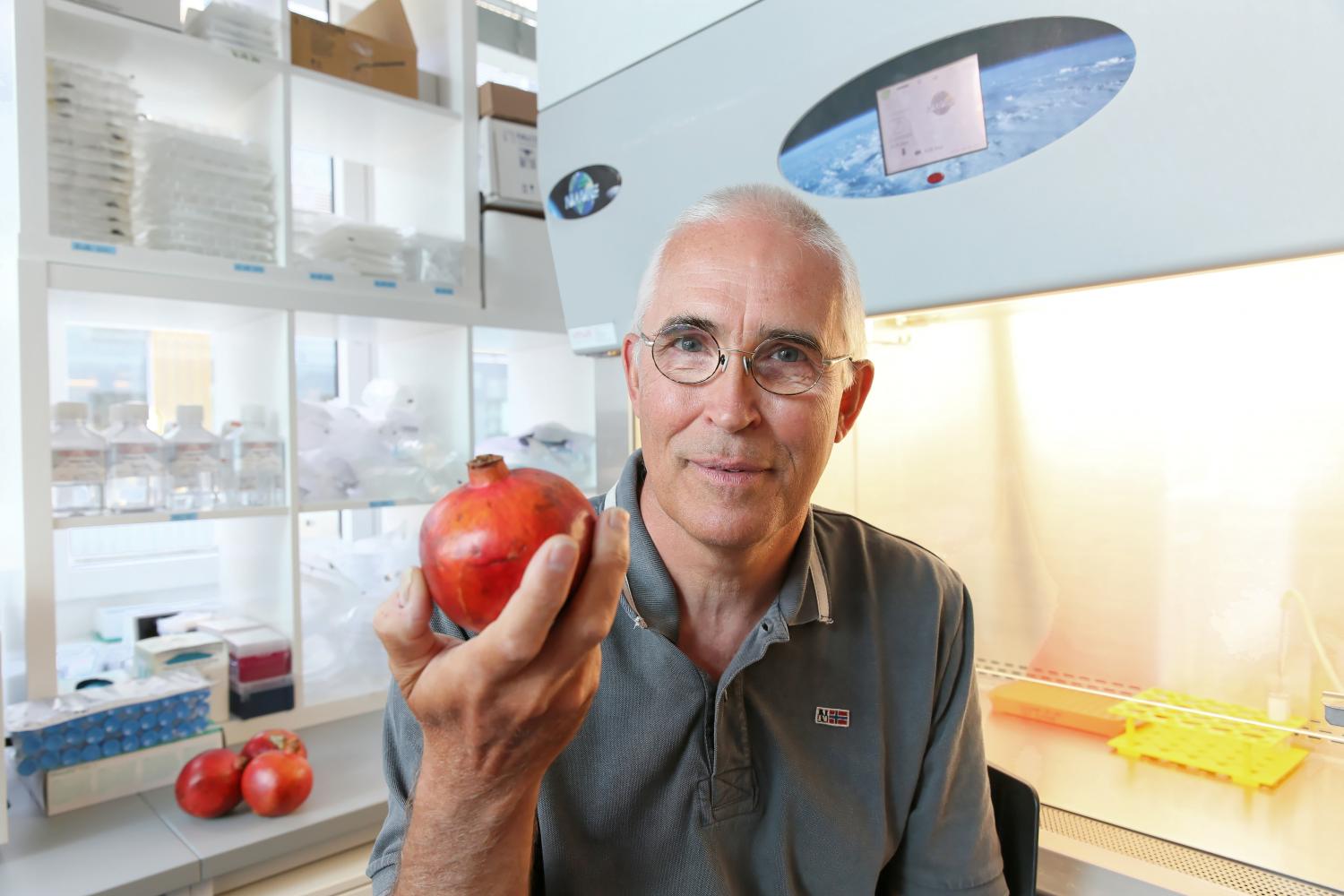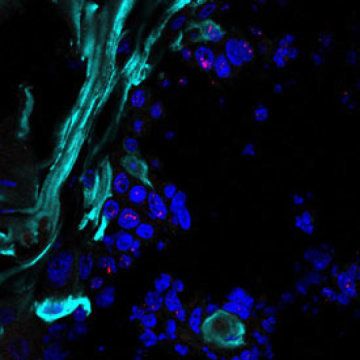Archive for the ‘health’ category: Page 386
Jul 12, 2016
Newly Discovered Features Of Collagen May Help Shed Light On Disease Processes
Posted by Karen Hurst in categories: biotech/medical, health, nanotechnology
Interesting.
WHAT: Scientists at the National Institutes of Health are reporting new, unexpected details about the fundamental structure of collagen, the most abundant protein in the human body. In lab experiments, they demonstrated that collagen, once viewed as inert, forms structures that regulate how certain enzymes break down and remodel body tissue. The finding of this regulatory system provides a molecular view of the potential role of physical forces at work in heart disease, cancer, arthritis, and other disease-related processes, they say. The study appears in the current online issue of the Proceedings of the National Academy of Sciences.
Scientists have known for years that collagen remodeling plays an important role in a wide variety of biological processes ranging from wound healing to cancer growth. In particular, researchers know that collagen is broken down by a certain class of enzymes called matrix metalloproteinases (MMPs), but exactly how they did this remained somewhat of a mystery, until now.
In the NIH study, the scientists isolated individual, nano-sized collagen fibrils from rat-tail tendons. They then exposed the collagen fibrils to fluorescently-labeled human MMP enzymes. Using video microscopy, the scientists tracked thousands of enzymes moving along a fibril. Unexpectedly, the scientists observed that the enzymes preferred to attach at certain sites along the fibril, and over time these attachment sites slowly moved, or disappeared and reappeared in other positions. These observations revealed collagen fibrils have defects that spontaneously form and heal. In the presence of tension, such as when tendons stretch, defects are likely eliminated, preventing enzymes from breaking down collagen that is loaded by physical force, the researchers suggest. In short, they identified a possible strain-sensitive mechanism for regulating tissue remodeling.
Continue reading “Newly Discovered Features Of Collagen May Help Shed Light On Disease Processes” »
Jul 12, 2016
Ray Kurzweil’s Nootropic Dietary Supplement Stack
Posted by Shailesh Prasad in categories: biotech/medical, health, neuroscience, Ray Kurzweil, singularity
Ray Kurzweil is a celebrity technologist, well known both for his work as an inventor and for his relatively accurate predictions of technological change. Among his predictions is that of an imminent biotech revolution, which may enable people to restore and maintain healthy life for much longer periods of time than those humans have enjoyed historically. In the meantime, Ray says he takes 250 dietary supplements each day, in addition to receiving half a dozen intravenous therapies each week.
“Although my program may seem extreme, it is actually conservative – and optimal (based on my current knowledge). [My doctor] and I have extensively researched each of the several hundred therapies that I use for safety and efficacy. I stay away from ideas that are unproven or appear to be risky (the use of human-growth hormone, for example).” – Ray Kurzweil in The Singularity Is Near (pages 211–212)
Some of Ray’s dietary supplements are nootropics, intended to maintain and improve brain health. He lists them in his book, Transcend (pages 15 and 22). I’ve compared the nootropics he recommends to reviews on Examine.com, an independent and unbiased encyclopedia on supplementation and nutrition that is not affiliated in any way with any supplement company. Below is a table that summarizes what I found, followed by some observations.
Continue reading “Ray Kurzweil’s Nootropic Dietary Supplement Stack” »
Jul 11, 2016
Manoj Saxena talks Artificial Intelligence with Gigaom
Posted by Karen Hurst in categories: finance, health, robotics/AI, security
Nice chime on QC.
Manoj Saxena is the executive chairman of CognitiveScale and a founding managing director of The Entrepreneurs’ Fund IV (TEF), a $100m seed fund focused exclusively on the cognitive computing space.
Saxena is also the chairman of Federal Reserve Bank of Dallas, San Antonio branch and Chairman, SparkCognition an Austin based cognitive security and safety analytics company.
Continue reading “Manoj Saxena talks Artificial Intelligence with Gigaom” »
Jul 11, 2016
Pomegranate finally reveals its powerful anti-aging secret
Posted by Bruno Henrique de Souza in categories: biotech/medical, health, life extension
Are pomegranates really the superfood we’ve been led to believe will counteract the aging process? Up to now, scientific proof has been fairly weak. And some controversial marketing tactics have led to skepticism as well. A team of scientists from EPFL and the company Amazentis wanted to explore the issue by taking a closer look at the secrets of this plump pink fruit. They discovered that a molecule in pomegranates, transformed by microbes in the gut, enables muscle cells to protect themselves against one of the major causes of aging. In nematodes and rodents, the effect is nothing short of amazing. Human clinical trials are currently underway, but these initial findings have already been published in the journal Nature Medicine.
As we age, our cells increasingly struggle to recycle their powerhouses. Called mitochondria, these inner compartments are no longer able to carry out their vital function, thus accumulate in the cell. This degradation affects the health of many tissues, including muscles, which gradually weaken over the years. A buildup of dysfunctional mitochondria is also suspected of playing a role in other diseases of aging, such as Parkinson’s disease.
One molecule plays David against the Goliath of aging
Continue reading “Pomegranate finally reveals its powerful anti-aging secret” »
Jul 8, 2016
New microfluidic device offers means for studying electric field cancer therapy
Posted by Karen Hurst in categories: biotech/medical, health
Very interesting — MIT testing electric field cancer therapy.
Low-intensity fields keep malignant cells from spreading, while preserving healthy cells.
Jul 6, 2016
Singularity Hypotheses
Posted by Amnon H. Eden in categories: climatology, economics, education, health, policy, robotics/AI, singularity, sustainability
Artificial intelligence (AI) technologies offer great promise for creating new and innovative products, growing the economy, and advancing national priorities in areas such as education, mental and physical health, addressing climate change, and more. Like any transformative technology, however, AI carries risks and presents complex policy challenges along a number of different fronts. The Office of Science and Technology Policy (OSTP) is interested in developing a view of AI across all sectors for the purpose of recommending directions for research and determining challenges and opportunities in this field. The views of the American people, including stakeholders such as consumers, academic and industry researchers, private companies, and charitable foundations, are important to inform an understanding of current and future needs for AI in diverse fields. The purpose of this RFI is to solicit feedback on overarching questions in AI, including AI research and the tools, technologies, and training that are needed to answer these questions.
Jul 4, 2016
Researchers reveal new therapeutic avenue in the fight against cancer
Posted by Karen Hurst in categories: biotech/medical, evolution, health, particle physics
A team of researchers led by professor Jean-Christophe Marine (VIB-KU Leuven) has identified NEAT1, a non-coding RNA, as a potential therapeutic target in the fight against cancer. In collaboration with the Cédric Blanpain lab (ULB), VIB researchers have shown that NEAT1 plays an important role in the survival of highly dividing cells — and in particular of cancer cells. These findings can help develop new drugs that target NEAT1, in order to kill cancer cells more effectively.
As a non-coding RNA, NEAT1 is not translated into a protein. It does however contribute to the formation of so-called ‘paraspeckles’, subnuclear particles that can be found in the cell nuclei of cancer cells. The function of these particles has remained obscure. Although highly conserved through evolution, NEAT1 appears to be dispensable for normal embryonic development and adult life as mice lacking NEAT1 are viable and healthy.
Guarding the genome
Continue reading “Researchers reveal new therapeutic avenue in the fight against cancer” »
Jul 4, 2016
Nobel Prize Winners Ask Greenpeace To Stop Hating On GMOs
Posted by Shailesh Prasad in category: health
Jul 2, 2016
Could ‘Zaps’ to the Brain Help Fight Glaucoma?
Posted by Karen Hurst in categories: biotech/medical, health, neuroscience
FRIDAY, July 1, 2016 (HealthDay News) — Electrical pulses to the brain may help restore vision in some partially blind patients, German researchers report.
Glaucoma and other types of damage to the eye’s optic nerve typically cause permanent damage. But, the new technique appears to kick-start the brain’s visual control centers, the researchers explained.
A 10-day treatment regimen — entailing upwards of nearly an hour a day of electrical pulses aimed directly into the eye — improved vision among patients who were losing their sight, the researchers said.
Continue reading “Could ‘Zaps’ to the Brain Help Fight Glaucoma?” »













